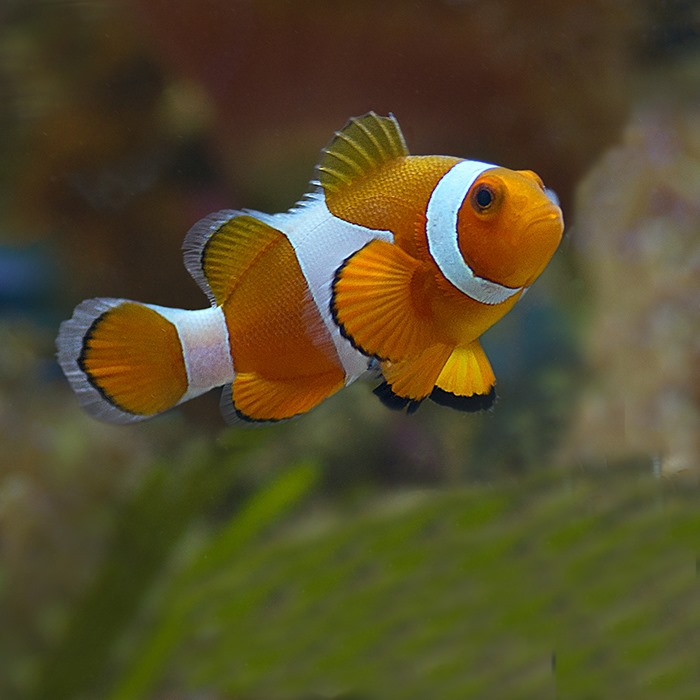

The nitrogen excreted from anemonefish increases the number of algae incorporated into the tissue of their hosts, which aids the anemone in tissue growth and regeneration. The anemone also picks up nutrients from the anemonefish's excrement. In return, the anemonefish defends the anemone from its predators and parasites. The sea anemone protects the anemonefish from predators, as well as providing food through the scraps left from the anemone's meals and occasional dead anemone tentacles, and functions as a safe nest site. The individual species are generally highly host specific, and especially the genera Heteractis and Stichodactyla, and the species Entacmaea quadricolor are frequent anemonefish partners. Symbiosis and mutualism Īnemonefish and sea anemones have a symbiotic, mutualistic relationship, each providing many benefits to the other.

Anemonefish primarily feed on small zooplankton from the water column, such as copepods and tunicate larvae, with a small portion of their diet coming from algae, with the exception of Amphiprion perideraion, which primarily feeds on algae. Diet Īnemonefish are omnivorous and can feed on undigested food from their host anemones, and the fecal matter from the anemonefish provides nutrients to the sea anemone. No anemonefish are found in the Atlantic. Anemonefish typically live at the bottom of shallow seas in sheltered reefs or in shallow lagoons. While most species have restricted distributions, others are widespread. They are copper tolerant for treatment of protozoan parasites.Anemonefish are endemic to the warmer waters of the Indian Ocean, including the Red Sea, and Pacific Ocean, the Great Barrier Reef, Southeast Asia, Japan, and the Indo-Malaysian region. They can be medicated as any other fish for the particular problem. Purchasing captive-bred fish can avoid these problems and most reliable dealers will sell only tank-raised clownfish, knowing their customers will benefit.Ĭultured clownfish have normal immune systems and potentially are susceptible to the same parasites and disease as wild caught fish. These include use of drugs during capture (Cyanide), bacterial infection and often an infestation by the single-cell parasite Brooklynella hostilis. Wild-caught clownfish historically have higher than average mortality after transport due to a number of reasons. This leads to a more diverse group of juveniles and consequently more variations are observed in tank-raised fish. Species that grow large, such as Clarkii, Gold Stripe Maroon and Tomato Clownfish, should be housed in larger tanks, and have tank-mates at least their size or larger.Ī nest of clownfish eggs in nature may have only a few survivors into adulthood, while farm-raised spawns generally have higher survival rates. Some species such as the False Percula are very peaceful and tolerant, while others such as Gold Stripe Maroon Clownfish (Premnas biaculeatus) normally will not tolerate conspecifics (unless paired). In aquariums this territoriality may lead to aggression towards tankmates and especially towards members of their own species.

This is also true with aquacultured clownfish. They defend their territory by aggressively chasing away other fish species. ORA Clownfish are fed a granulated high-protein fish feed as well as some frozen foods.īy nature clownfish are territorial and mate for life. Foods containing algae, such as spirulina or other natural algae products are a good addition. Most Clownfish eat algae, which consists of about one third of their diet. They will also accept dry foods such as pellets, flakes, freeze-dried or granulated foods. They will eat frozen brine shrimp, mysid shrimp, and many other commonly available commercial frozen foods. ORA clownfish are raised on common aquarium foods, and therfore, they are well adapted to aquarium diets. In fact, some tank-bred fish are observed to associate with unusual hosts such as large-polyp stony corals and corallimorpharians.
Clown fish professional#
This is not true, as demonstrated by the many professional and amateur aquarists who have observed cultured clownfish associate with host anemones in aquariums. One popular misconception about cultured clownfish is that they will not symbiotically associate with anemones like their wild counterparts. ORA has taken clownfish culture to the highest level, producing the largest, most colorful and healthiest fish ever grown. Captive-bred clownfish are indistinguishable in behavior and morphology from clownfish found in nature. Aquarists and aquaculture biologists have bred them for over 40 years. Clownfish were the first popular saltwater aquarium species to be aquacultured.


 0 kommentar(er)
0 kommentar(er)
